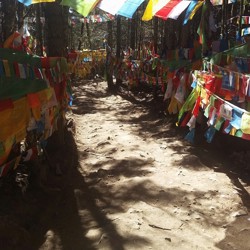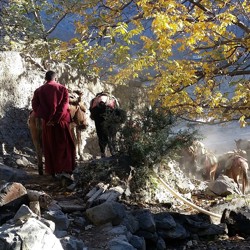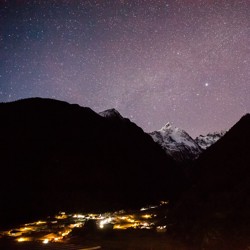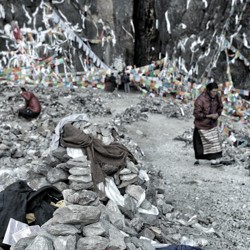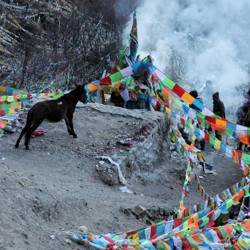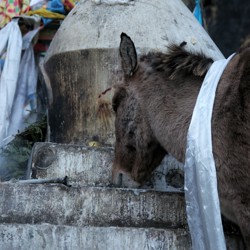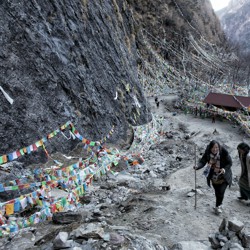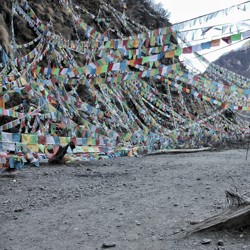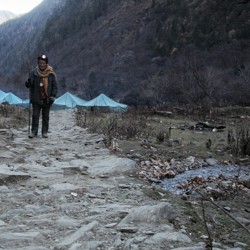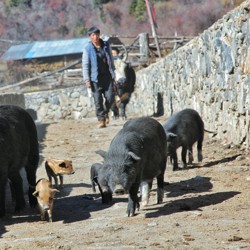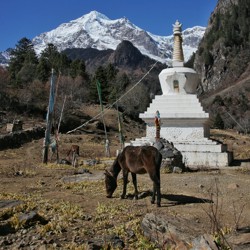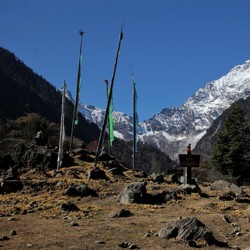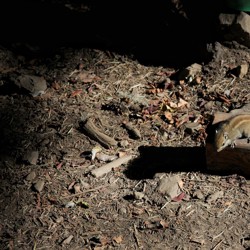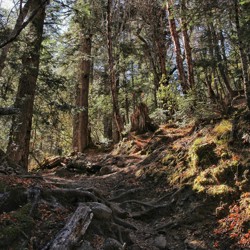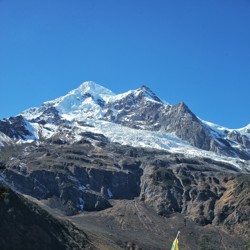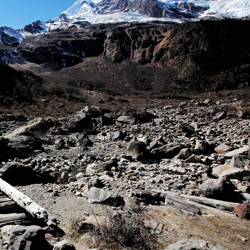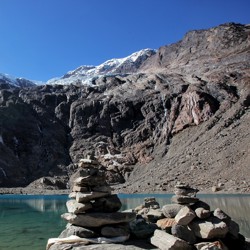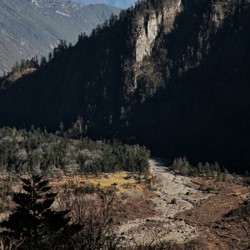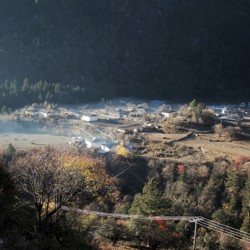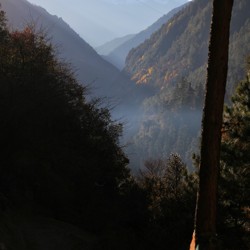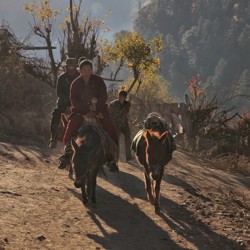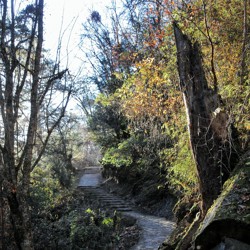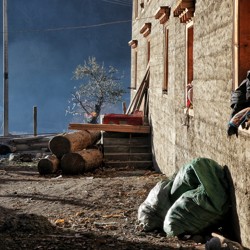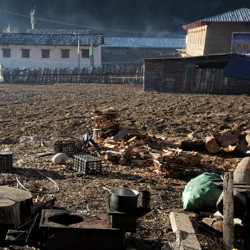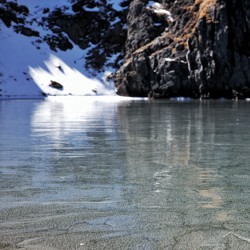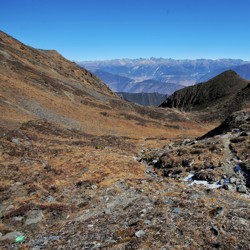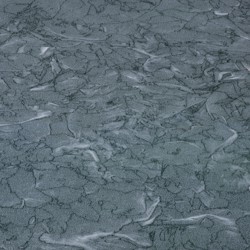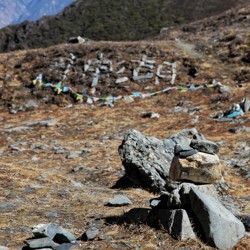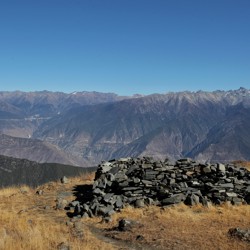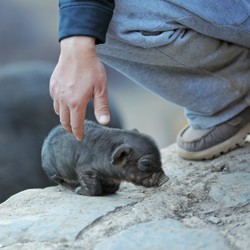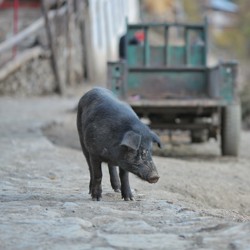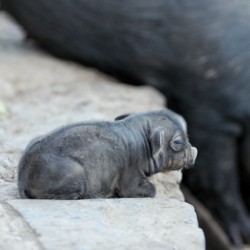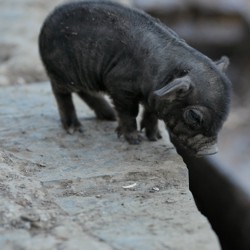22. November 2015
Yubēng
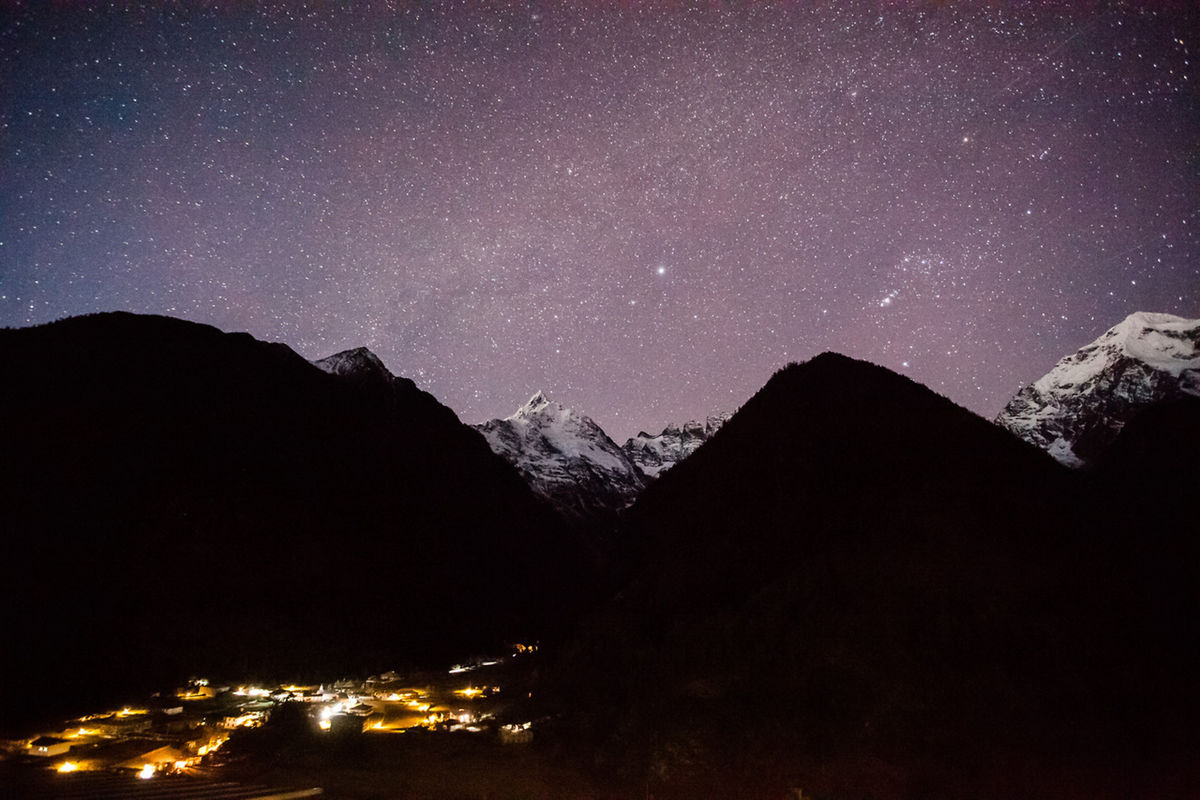
The bus ride from Dàochéng to Shangri-La was long and bumpy. For almost 12 hours we drove countless narrow serpentines and were finally already near our destination, when we had an unexpected stop. A truck had a brakedown on the bridge right before us, blocking it. Only small cars were able to slowly squeeze through, with just a few centimeters on each side.
Getting information about what we should do now was not easy for us few non-Chinese travellers (Andrew was still in Dàochéng), but we finally understood that the Chinese people were themselves not sure how long it would take for cleaning up this mess. Some locals from the nearby houses told us we should prepare for staying overnight or try to pay a driver of a car to take us to Shangri-La – something which the Chinese people already had been starting to do. We Westerners discussed on how to proceed and finally found a Chinese tourist heading to Lìjiāng who was agreeing to take us to Shangri-La on the way even for free.
The hostel we found made up for the bad luck we had on our way. The hostel owner was really communicative, having travelled himself a long time ago and having lead several trekking tours in the mountains of Yúnnán and Western Sìchuān. He also introduced me to two Americans, who would be heading to Yubēng the next morning as well.
Of course I also used the opportunity to ask him about the hikes in Yubēng, since I had read wildly differing estimations about the time needed. To even get into Yubēng, one has to already ascent quite a bit. According to him it would be taking around five to six hours (and I should definitely carry not much more than a daypack), four hours if I was really fit. And, if I would be a Tibetan, he added smilingly, I would maybe be able to do it in three hours. That sounded like a new challenge to me!
The next morning the two Americans and I went to Fēilaí Sì, a more or less necessary stop before Yubēng itself. In the hostel there I talked with several Chinese tourists. Almost all of them were of the more adventurous type I seldom had seen on my trip so far. They also told me that, since it was the year of the goat and one of the holy places was associated with the goat as well, a lot of Tibetan pilgrims were expected.
The next morning we took the bus to the starting point of the trek into Yubēng. I said goodbye to the two Americans and started my ascent, carrying my whole backpack with me. While I would have liked to leave some luggage in Fēilaí Sì – as most tourists do – I had not much time left in China for another night there and I wanted to definitely carry my camera, tripod … But even so I started to overtake even the Tibetan pilgrims and monks and after just three hours I arrived in Yubēng after an ascent of 1150 meters followed by a descent of 550 meters.
The small village at an altitude of 3200 meters would now be my new home for two more full days before I would have to had back and finish my trip to China. I found a nice hostel and spent the rest of the afternoon just walking through the village and enjoying this far-off place. Finally I met the two Americans again, who indeed had needed the estimated six hours, as most travellers.
In the evening we had dinner together and talked about our plans for the next days. Yubēng has three day trips to some sacred places and since I would have only two days here I would try to do the two easier tours on just one day, hoping to have then enough energy left to do the not commonly taken path to the Holy Lake on my last day. Since they did not have the same level of acclimatization as I and also not the time constraints, they would take things more slowly and just start with the hike to the Glacier Lake.
The next morning I left again before sunrise and this time I was not even completely alone. As I had been told indeed a lot of Tibetan pilgrims were on their way to the Sacred Waterfall. I didn’t mind not having the nature all for myself this time at all, considering that the large amount of pilgrims contributed to the whole spirtual atmosphere.
Right on time for lunch I arrived back in Yubēng and after an extensive break I started my second “day trip” to the Glacier Lake. Just a bit before reaching it, I caught up with the two Americans – a nice surprise. Since I was not in a hurry anymore we decided to finish the hike together.
On my second morning in Yubēng I started my hike to the Holy Lake. The start of the path was barely marked at all, already telling me that this route was seldomly taken. Indeed the next few hours I was almost completely alone again, having sometimes to climb over fallen trees. I just passed three Chinese hikers on my way to the lake.
Finally the Holy Lake, completely frozen at an altitude of 4500 meters, was in front of me. I was almost noon already and the sunlight was quite warm so it was not even that cold. The sound of the slowly cracking ice echoed on the nearby rock, undisturbed by any other noise. After some time the Chinese hikers arrived and we shared our lunch before I headed back to the village.
When I arrived back in Yubēng I met someone I didn’t expect. Andrew had arrived here with two older Chinese guys as well. Having heard about my description of Yubēng in Dàochéng and my disappointments of Lìjiāng during my first trip trough China he had changed his travel plans. So we decided having a fantastic dinner together and celebrated my almost finished trip through China.
